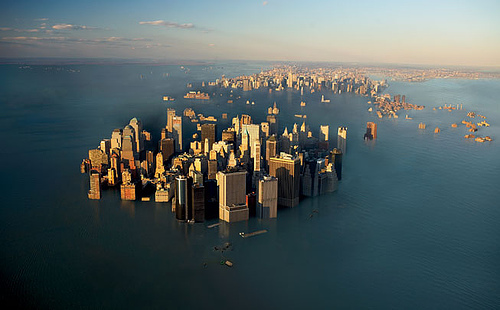What are the true costs of rising sea levels?

Scientists set out costs of sea level rise
By Tim Radford
LONDON, 15 March, 2016 − A simple relationship between sea level rise and the massive potential costs of future coastal flooding has been established by scientists in Germany.
As sea levels rise, the damage to human economies rises even faster. And as sea levels rose by an estimated 14cms in the last century, and could rise by up to 130cms in this century, the coastal cities of the world could face huge bills for storm and flood damage, or for investment in coastal defences.
Either way, global warming and attendant sea level rise − through the thermal expansion of the oceans, or the melting of the ice caps, or both − will take its toll.
“When sea levels rise, damage costs rise even faster, our analyses show,” says Markus Boettle, a researcher at the Potsdam Institute for Climate Impact Research, who, with colleagues, reports in the Natural Hazards and the Earth System journal on a new methodology for calculating the costs of disasters yet to happen.
Increasing risk
“At the same time, the severity of flood impacts is not only determined by environmental factors, but also to a significant extent by human decisions. Flood defence measures can counteract the increasing flood risk.
“Our study illustrates that the complexity of climate change, adaptation and flood damage can be disentangled by surprisingly simple mathematical functions to provide estimates of the average annual costs of sea level rise over a longer time period.”
The Potsdam team is not the first to try to measure the potential costs of coastal flooding. One study estimated that storm surges, floods and hurricanes could be costing the world $1 trillion a year by 2050, and another put the figure at $100,000 billion a year by 2100.
“The severity of flood impacts is not only determined
by environmental factors, but also
to a significant extent by human decisions”
But the Potsdam scientists have tried a simplified approach: calculate the probability of flood events – taking into account numbers of events and their severity – and use mathematical tools to translate this into probable damage.
Coastal cities are very different, and so are the marine hazards that each might face, but the Potsdam scientists say their equations work equally well for Mumbai, New York or Hamburg, for the Pacific, the Atlantic or the North Sea.
Probable outcomes
They tested their methodology on the Danish city of Copenhagen, and found that even a moderate rise of 11 centimetres by mid-century would double the city’s economic losses, unless action to improve coastal defences was taken.
The purpose of such exercises is to help city and coastal planning agencies, and the new methodology has nothing to say about single catastrophic events. It provides a picture of probable outcomes over the decades, and the costs cities must sooner or later face.
“A large share of the world population lives in coastal regions,” says Jürgen Kropp, head of climate change and development research at the Potsdam Institute. “In the light of limited funds for adaptation, it is an asset to provide comparable cost assessments.
“While mitigation remains of vital importance to keep climate impacts on a still-manageable scale, an adaptation perspective can help limit damage costs in the right places.” – Climate News Network



